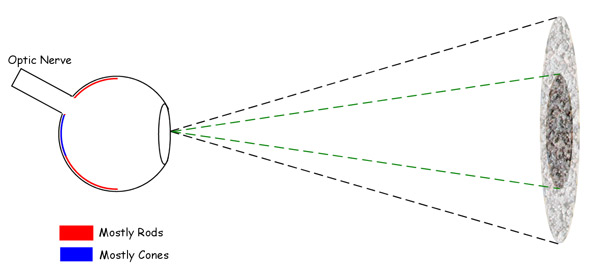averted vision

Averted vision is looking at a faint object "out of the corner of the eye" – with peripheral vision – in order to detect it more easily. The method of averted vision takes advantage of the fact that the most optically-sensitive part of the retina (the layer of cells at the back of the eye) is off-center.
Two kinds of light-detecting cells make up the retina: cones and rods. The cones support high light-level, color vision, while the rods are for low-light vision. In the human eye there are about 5 million cones and 100 million rods. The cones occupy a small spot (the fovea) centrally located on the retina, whereas the rods surround the cones and cover a much greater area (the macula), as shown in the diagram.
An observer can multiply light sensitivity many times by slightly averting the head so that the projected image from an eyepiece falls onto the retinal region of high light-sensitivity.


